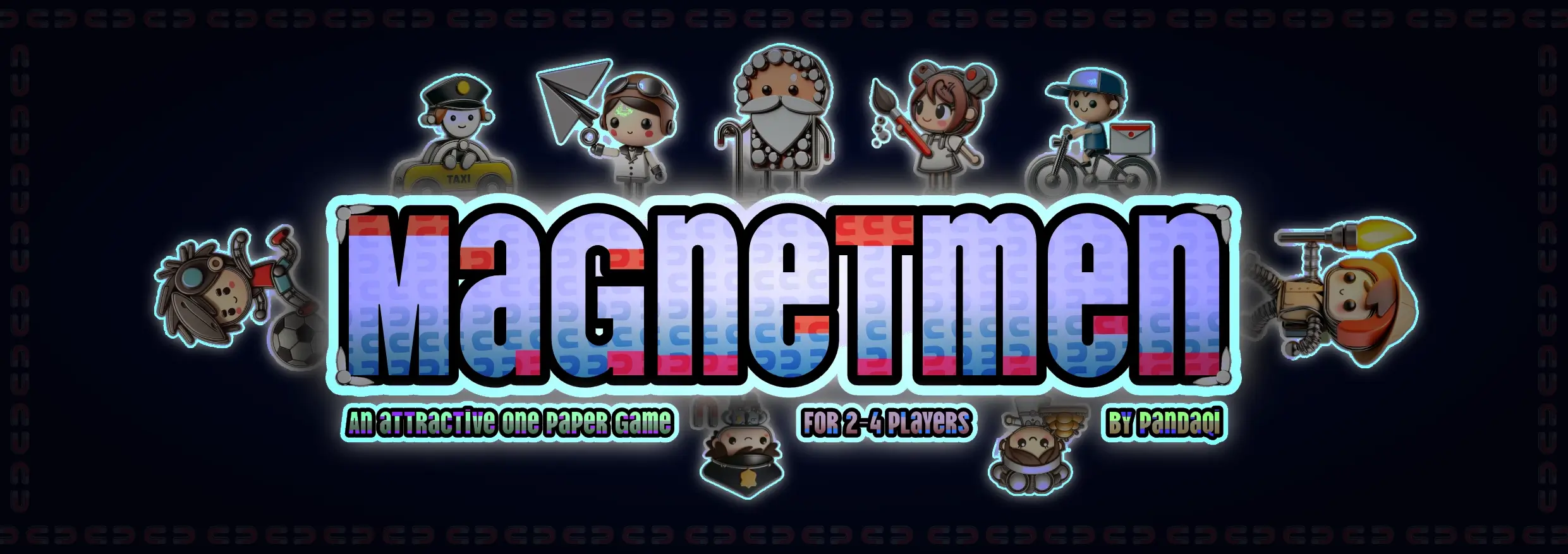Print a game board and hand out pens.
Each player picks one inventory at the edge of the board: that’s where you’ll track your collected Magnetmen.
The game ends when nobody can take another move. Sum the values of all Magnetmen you collected: highest score wins!
Take clockwise turns. On your turn, if possible, you must collect a square.
- Pick an unused square. (Not destroyed, not collected yet.)
- Cross it out
- Draw the icon in an empty slot in your inventory.
Here’s the twist. The more often you possess a specific icon, the more you’re repelled by it.
- You have an icon once? You can’t collect squares horizontally next to it.
- You have an icon twice? You can’t collect squares horizontally and vertically next to it.
- You have an icon thrice (or more)? You can’t collect any square next to it (horizontal, vertical or diagonal).


That’s it!
The paper itself explains how each Magneeple scores you points. Or you can read the section on the Magnetmen.
Once you’re familiar with the game, and start playing other sets, you can use the advanced rules. This introduces 2 rules changes.
On your turn, you can also pick the destroy action.
- Pick an unused square.
- Scratch it out entirely. (Make it unrecognizable.)
- This icon is now simply removed from the board.
You don’t “get” the icon in your collection. But it can take away good squares from other players, or open up possibilities for yourself. (Because a destroyed icon is removed from the board, it’s not considered for the Repel rule.)
Secondly, if you collect any type 4 times, you take no more turns.

Below is an overview of all Magnetmen in the game.
Please note that there is slight randomization in the generator. Many of the Magnetmen have multiple variations on their power, with one picked at random. Only the most common one is explained below.
The base set contains …
The advanced set contains …
The expert set contains …
